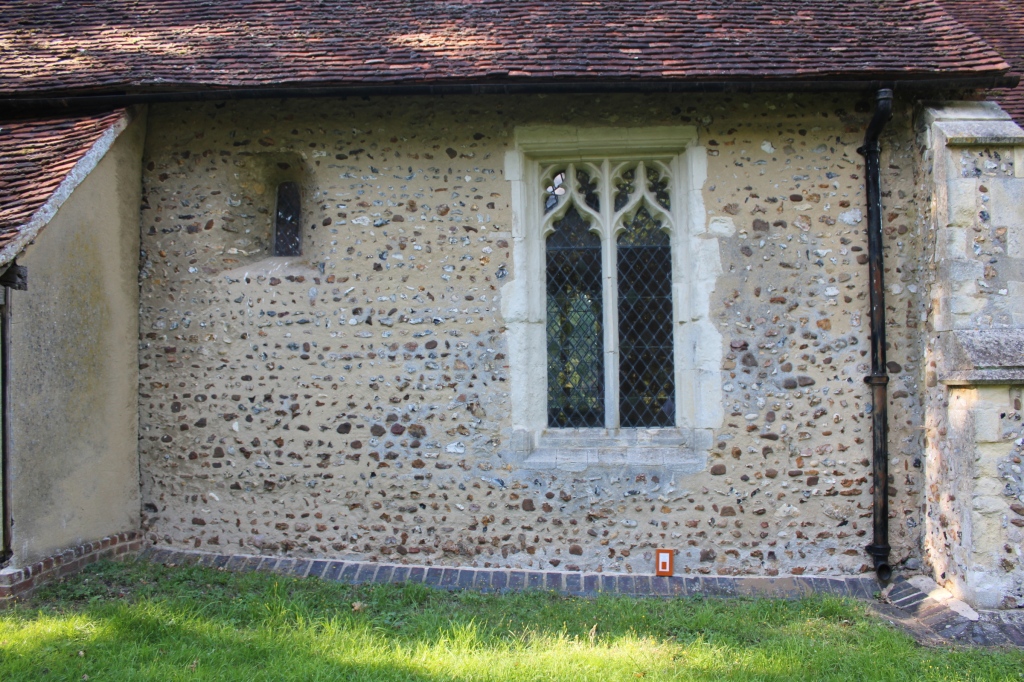Location: https://w3w.co/balancing.holly.standing
The church of St Mary The Virgin, sits directly between the Essex towns of Thaxted and Elsenham. As you drive along the B1051 a single small sign points you down a rough gravel track towards it. After about 600m you will come across the Grade 1 listed building hidden by trees.

The church is amongst the oldest one found in Essex and was the parish church of the small village of Chickney. The village has always seemed to be small, only ever consisting of a few farms, the Church and Sibley’s farmhouse which once gave its name to a now vanished train station. The population was as high as 42 in 1881, but in 2011 there were only around 34 residents recorded. In the Domesday Book it was called ‘Cicchenai’ and then in 1230 it was called ‘Chickenye’. This probably comes from the Old English for ‘Chicca’s island’, or perhaps even ‘chicken island’ although there are no large bodies of water close by.

St Mary’s was officially closed in 1972 when its parish was merged with that of St Mary’s Broxted. Control and maintenance of the church was then given to what is now The Churches Conservation Trust in 1974. It still remains consecrated.

There appears to be no record of any other church that predates the stone building and while many authorities date it from around 1000 CE, it has been suggested that it may be as old as about 850 CE. It was originally built from local flint and rubble and has an uneven shape which is not quite rectangular. The churchyard is oval, which may indicate that the ground was sacred in pre-Christian times. What remains of the Anglo-Saxon church is the nave and short chancel, and perhaps a rounded apse at the eastern end. A lot of this is still visible, most notably it has two Anglo-Saxon narrow slit windows situated high up. The openings to them are splayed both outwards and inwards with the narrowest part in the middle. They are glazed now but would not have been like that originally. This arrangement can be seen in several flint churches in East Anglia.


It is noticeable that unlike Greensted, it is not a working church, it’s emptiness gives it a completely different feeling. However it still remains a tangible link to the Anglo-Saxon past of England. St Mary’s is well worth a visit if you can find it because it is a hidden gem that holds the stories of a bygone era within its ancient stones.
Links
- Churches Conservation Trust page – https://www.visitchurches.org.uk/visit/church-listing/st-mary-chickney.html
- The Churches Conservation Trust Guide from 2000 – https://www.visitchurches.org.uk/static/uploaded/465a8fe2-67d0-49d6-ad9a17c4e7b28a94.pdf
- Wikipedia page – https://en.wikipedia.org/wiki/St_Mary%27s_Church,_Chickney
- Historic England – https://historicengland.org.uk/listing/the-list/list-entry/1112190
- More information about the Altar top or Mensa – https://www.newadvent.org/cathen/01346a.htm